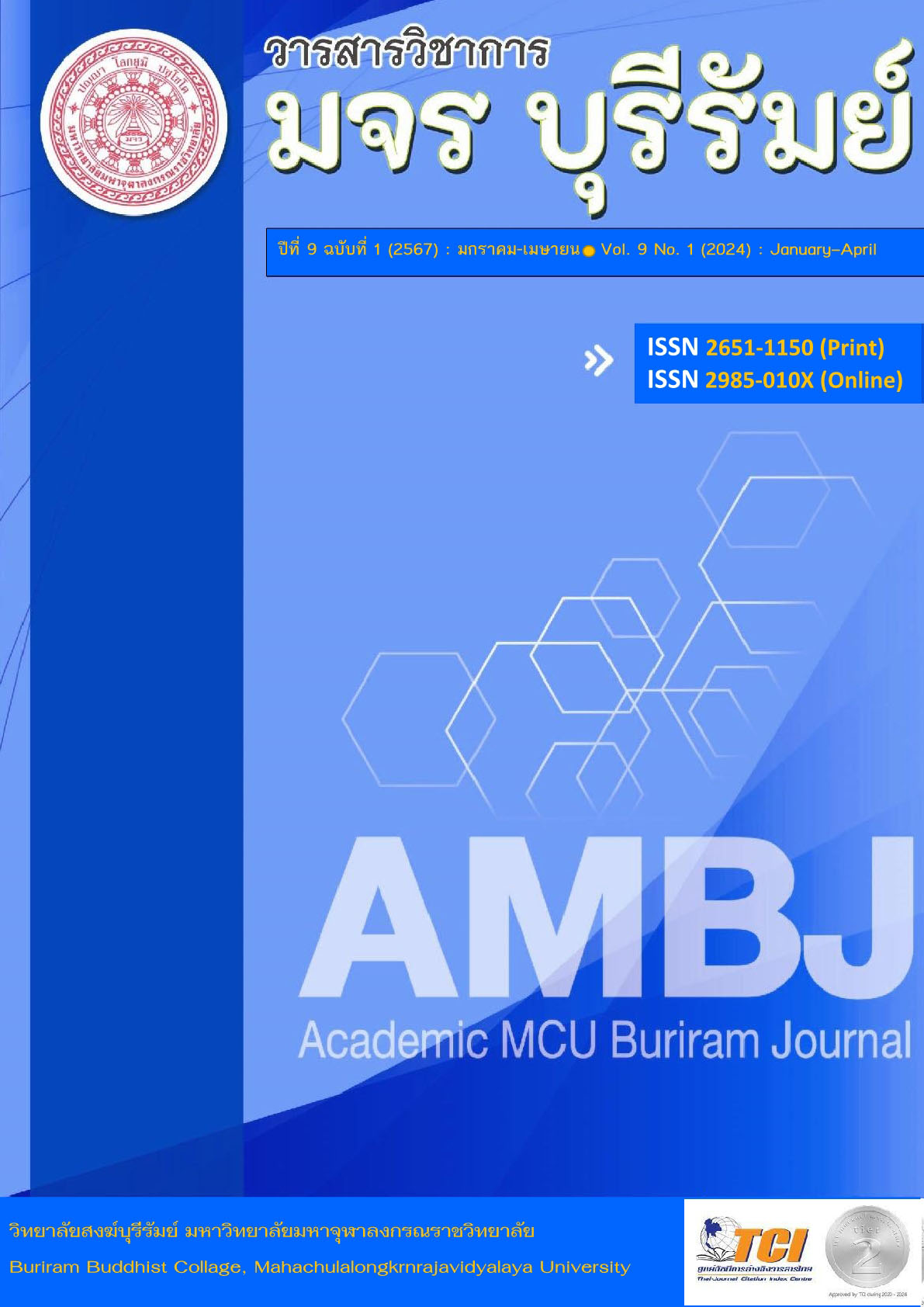The Curriculum Development of Reading Comprehension using Four Blocks with Storyline Diagram for Grade 6 Students
Keywords:
The Curriculum Development, Reading Comprehension, Four Blocks, Storyline DiagramAbstract
The purpose of this research were: 1) create the Curriculum Development of Reading Comprehension Using Four Blocks with Storyline Diagram for Grade 6 Students. and 2) to study the impacts of utilizing the curriculum. This is the pre-experimental research. The design is the one-group Pretest-Post test design. There were 18 samples used cluster sampling methodology for this study who are Primary 6 students studying at Banmaejua School (Den chai district, Phrae Province) in 2nd semester of Academic Year B.E. 2566. The instruments used for data collection were the curriculum, the curriculum instructions, Reading Comprehension tests. The data were analyzed by percentage, average, standard deviation, and t-test dependent.
The research results found that:
1. The curriculum development in enhancing Primary 6 students’ ability to reading comprehension with a Four Blocks and Storyline Diagram consists of 7 parts which are 1) background 2) principles 3) objectives 4) content in the curriculum consisted of `4 units (1) Aesop’s fables (2) Moral Tales (3) story (4) News 5) learning activities 6) learning aids/ sources 7) assessment and evaluation. The average of the curriculum appropriateness was at the high level and the overall of the curriculum instructions was appropriated at high level.
2. After utilizing the curriculum development in enhancing Primary 6 students’ ability to reading comprehension with a Four Blocks and Storyline Diagram, it was found that the posttest score was higher than the pretest at the significant level of .05.
References
กรมวิชาการ. (2546). การเรียนรู้แบบเน้นผู้เรียนเป็นสำคัญ. กรุงเทพมหานคร: คุรุสภาลาดพร้าว.
กลุ่มงานนิเทศติดตามและประเมินผล. (2565). รายงานผลการดำเนินงาน ปีการศึกษา 2565. แพร่: สำนักงานการศึกษาประถมศึกษาแพร่ เขต 2.
กลุ่มงานวิชาการโรงเรียนบ้านแม่จั๊วะ (ประชาราษฎร์รังสรรค์). (2565). บันทึกการ PLC ของครูและบุคคลากรทางการศึกษา ประจำปีการศึกษา 2565. แพร่: โรงเรียนบ้านแม่จั๊วะ (ประชาราษฎร์รังสรรค์).
กิ่งกมล บางศรี. (2565). ผลของ Story Maps ต่อการพัฒนาทักษะการอ่านเพื่อความเข้าใจของนักเรียนชั้นประถมศึกษาปีที่ 6 ของ EFL ภาษาไทยโรงเรียนขยายโอกาสทางภาคตะวันออกเฉียงเหนือของประเทศไทย. รายงานการวิจัย. หลักสูตรมหาบัณฑิต สาขาวิชาหลักสูตรและการสอน: มหาวิทยาลัยราชภัฏร้อยเอ็ด.
จันทร์ฟอง ปัญญาวงค์. (2565). การจัดการเรียนรู้โดยใช้กลวิธีแบบโฟร์บล็อกร่วมกับเทคนิค 5W1H เพื่อเสริมสร้างความสามารถในการอ่านจับใจความสำคัญและการเขียนสรุปใจความสำคัญ ภาษาอังกฤษสำหรับนักเรียนชั้นประถมศึกษาปีที่ 6. รายงานการวิจัย. หลักสูตรมหาบัณฑิต สาขาวิชาหลักสูตรและการสอน: มหาวิทยาลัยพะเยา.
พรรณทิพย์ภา ปาลวัฒน์. (2562). การพัฒนาหลักสูตรส่งเสริมทักษะการอ่านภาษาอังกฤษเพื่อความเข้าใจ โดยใช้เทคนิค เค ดับเบิลยู แอล พลัส สำหรับนักเรียนชั้นประถมศึกษาปีที่ 6 โรงเรียนมัธยมวิทยา. วิทยานิพนธ์ศึกษาศาสตร์มหาบัณฑิต สาขาวิชาหลักสูตรและการสอน. บัณฑิตวิทยาลัย: มหาวิทยาลัยราชภัฏลำปาง.
สงัด อุทรานันท์. (2532). พื้นฐานและหลักการพัฒนาหลักสูตร. กรุงเทพมหานคร: คณะครุศาสตร์ จุฬาลงกรณ์มหาวิทยาลัย.
สำนักงานคณะกรรมการการศึกษาขั้นพื้นฐาน. (2563, 2564, 2565). สทศ. NIETS สถาบันทดสอบทางการศึกษาแห่งชาติ (องค์การมหาชน). เข้าถึงได้จาก http://www.niets.or.th (สืบคนเมื่อ 12 พฤศจิกายน 2566).
สำนักงานคณะกรรมการการศึกษาขั้นพื้นฐาน. (2551). หลักสูตรแกนกลางการศึกษาขั้นพื้นฐาน พุทธศักราช 2551. กรุงเทพมหานคร: โรงพิมพ์ชุมนุมสหกรณ์การเกษตร แห่งประเทศไทย.
Clark, B. C. (1997). Growing Up Gifted 5th ed. Upper Saddle River. New Jersey: Pretica-Hall.
Taba, H. (1962). Curriculum Development Theory and Practice. New York: Harcourt, Brace.
Downloads
Published
How to Cite
Issue
Section
License
Copyright (c) 2024 Academic MCU Buriram Journal

This work is licensed under a Creative Commons Attribution-NonCommercial-NoDerivatives 4.0 International License.
ทัศนะและความคิดเห็นที่ปรากฏในบทความวารสารฉบับนี้ถือเป็นความรับผิดชอบของผู้เขียนบทความนั้น ไม่ถือเป็นทัศนะและความรับผิดชอบของบรรณาธิการ





